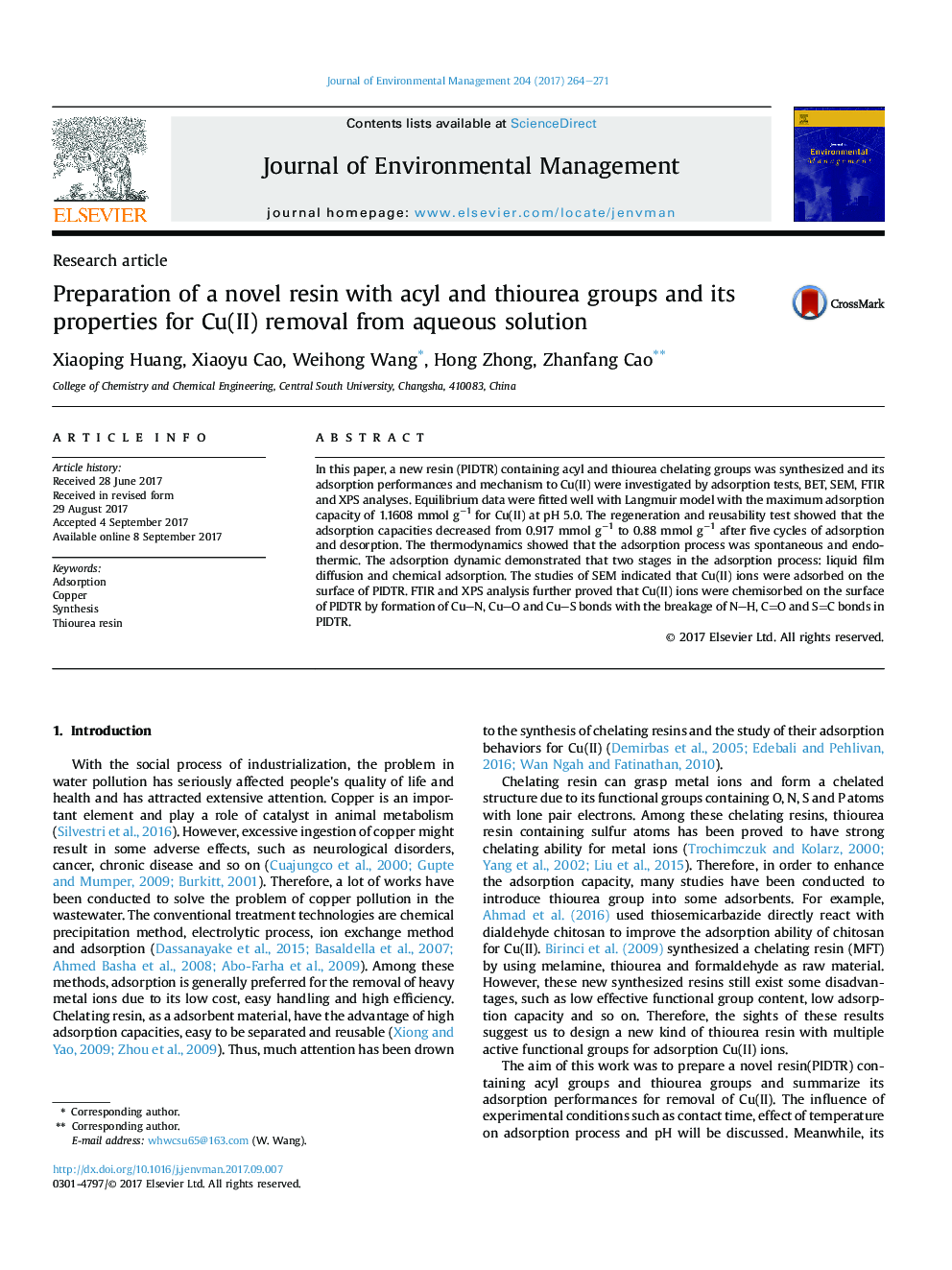| Article ID | Journal | Published Year | Pages | File Type |
|---|---|---|---|---|
| 5116263 | Journal of Environmental Management | 2017 | 8 Pages |
Abstract
In this paper, a new resin (PIDTR) containing acyl and thiourea chelating groups was synthesized and its adsorption performances and mechanism to Cu(II) were investigated by adsorption tests, BET, SEM, FTIR and XPS analyses. Equilibrium data were fitted well with Langmuir model with the maximum adsorption capacity of 1.1608 mmol gâ1 for Cu(II) at pH 5.0. The regeneration and reusability test showed that the adsorption capacities decreased from 0.917 mmol gâ1 to 0.88 mmol gâ1 after five cycles of adsorption and desorption. The thermodynamics showed that the adsorption process was spontaneous and endothermic. The adsorption dynamic demonstrated that two stages in the adsorption process: liquid film diffusion and chemical adsorption. The studies of SEM indicated that Cu(II) ions were adsorbed on the surface of PIDTR. FTIR and XPS analysis further proved that Cu(II) ions were chemisorbed on the surface of PIDTR by formation of CuN, CuO and CuS bonds with the breakage of NH, C=O and S=C bonds in PIDTR.
Keywords
Related Topics
Physical Sciences and Engineering
Energy
Renewable Energy, Sustainability and the Environment
Authors
Xiaoping Huang, Xiaoyu Cao, Weihong Wang, Hong Zhong, Zhanfang Cao,
